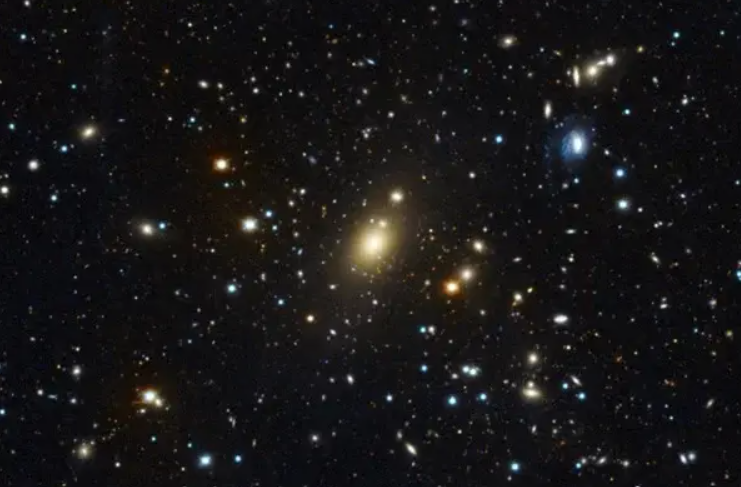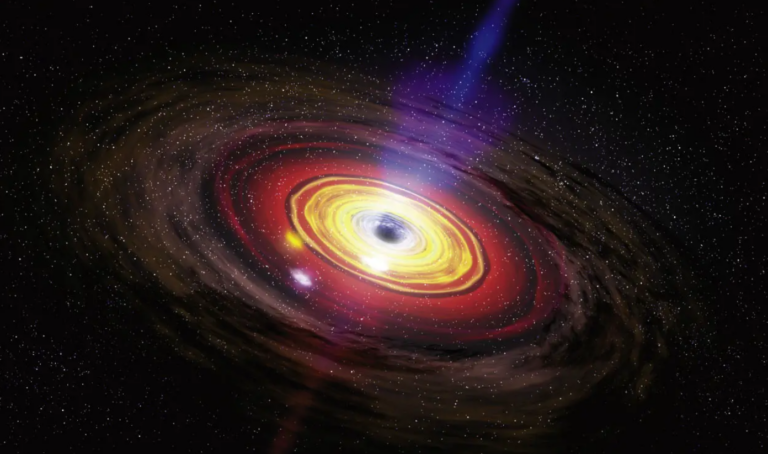The Largest Black Hole Ever Recorded, Weighing Two-Thirds the Mass of All the Stars in the Milky Way
A Supermassive Black Hole, 40 Billion Times the Sun’s Mass, Discovered at the Heart of Galaxy Holm 15A
Astronomers have recently found the largest known black hole in the galaxy Holm 15A which is 40 billion times as massive as the Sun. Sited within the Abell 85 galaxy cluster, Holm 15A was probably formed through the process of a merging of at least eight smaller galaxies to become one of the largest elliptical galaxies. This supermassive black hole, about as large as the solar system, dislodges stars from its center leading to what has been termed a ‘cored galaxy’. This discovery also signifies the understanding of the processes of merging galaxies as well as theories about quasars, when such large holes power the most brighting distant galaxies.
The size of black hole was also a revelation, with the mass of the black hole at two-thirds of the total mass of the Milky Way’s stars. Holm 15A which is at the central region of the Abell 85 cluster was investigated by astronomers who focused on stars in the region in the vicinity of the central black hole of the galaxy. Based on this data, the team developed a model to estimate the object’s staggering weight finds are available on the preprint server arXiv and the group’s work will be published in The Astrophysical Journal.

Creating Giant Galaxies
Sometimes, when two elements are involved such as Milky Way and Andromeda, when they combine after the galactic collision, an elliptical spiral galaxy is formed. They also rise within galaxy rich collections and may then be involved in multiple collisions to produce bigger elliptical galaxies. During the process of merging of one or two central black holes, they can force nearby stars to the outside of that galaxy.
Subsequently, the resultant gargantuan elliptical galaxy barely has ‘gas’ to form stars meaning the core of the galaxy remains fairly vacant as the black hole pushes the stars in peripheral regions. Astronomers refer to these galaxies as ‘cored galaxies’; most of these galaxies usually lie in the centre of galaxy clusters.
The study suggests that Holm 15A, at the center of its cluster, probably formed out of merging of two massive cored elliptical galaxies. That means Holm 15A is the result of the collision and merging of 8 smaller spiral galaxies over billions of years. Spiral galaxies evolve and merge into ellipticals; pairs of ellipticals transform into cored galaxies and the result of merging two cored galaxies created Holm 15A. It also created the sequence of mergers to form this gigantic black hole at the centre thus its diameter being three million times larger than the diameter of the solar system but it possess mass 40 billion times that of the sun.
Shedding Light on Quasars
This massive black hole is the new find of astronomers, which is the phenomenal of the researchers.
‘Even to conceive of a black hole this size is staggering,’ said Jens Thomas of the Max Planck Institute for Extraterrestrial Physics in Germany and a co-author of the research.
This discovery is especially confusing because, as pointed out by current hypotheses on quasars—galaxies that are light-years away but exist in the Galaxy’s center and encompass black holes with food-rich light beams that result from the accretion process. The properties found by astrophysicist from quasar, astronomers estimated that black holes of more than 10 billion solar masses must exist.
“At last, we’ve found one close to home, thus arguing that our conception of quasars and black hole accretion is correct,” said Roberto Saglia, a co-author of the study who is also from MPIA.
Do not forget to share your opinion with us to provide you with the best posts !




Just WOW